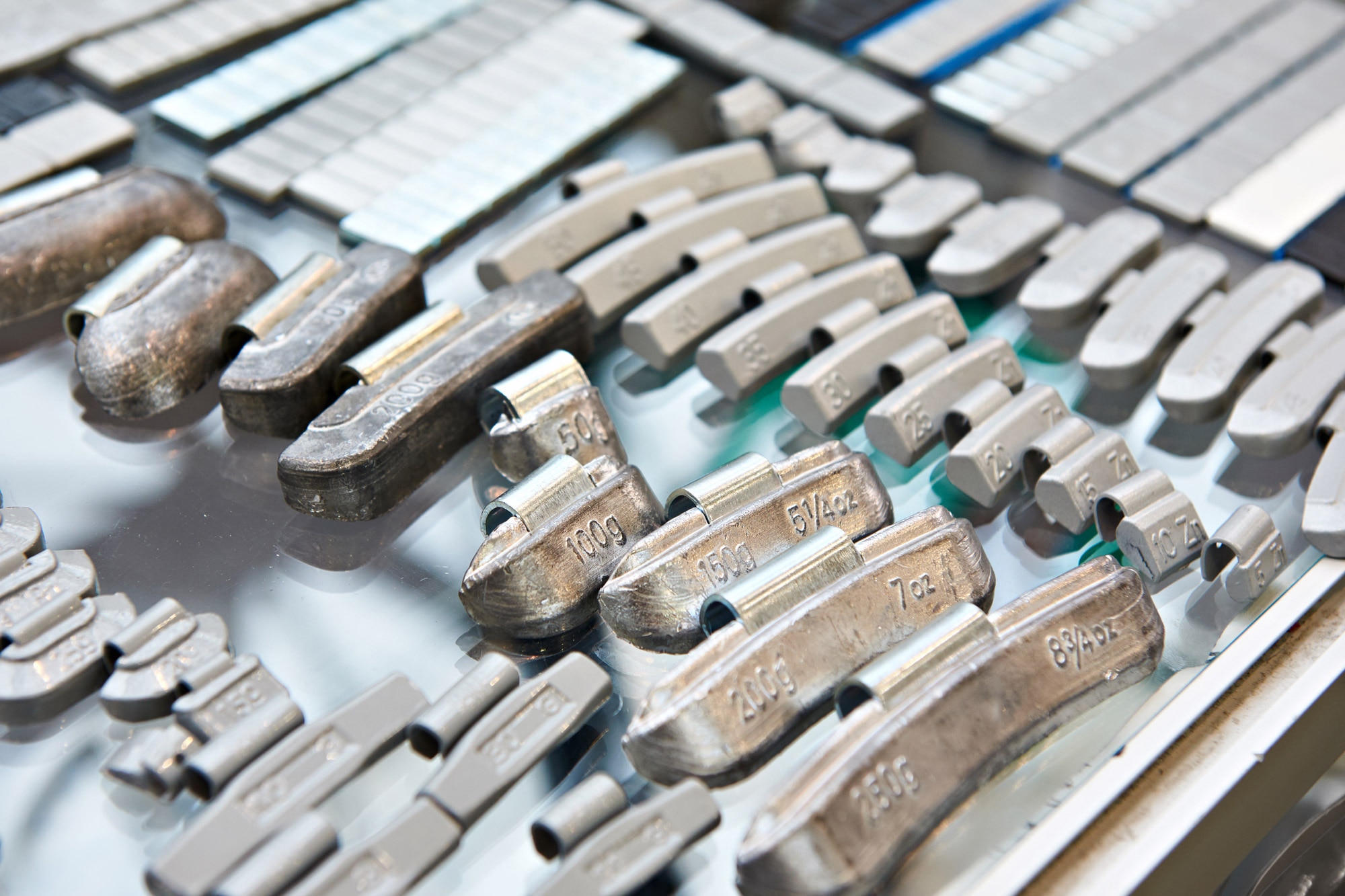Wheel Weights: Everything You Need to Know
These small metal pieces help deliver a smoother ride.
 Getty Images
Getty Images
Think of a car wheel as a spinning top: It can't spin evenly if it's not perfectly balanced. When a wheel is out of balance it can shake, and often it can be felt in the steering wheel as you drive down the road.
Wheel weights help achieve that balance by evening out the weight distribution, and they contribute to a smoother, more comfortable ride. Here's what you need to know about wheel weights.
Wheel Weights Are Placed Directly on the Wheel
Often small and rectangular, a wheel weight is a metal tab fitted to the inside or the outside of a wheel, depending on the type of car it's installed on. It's usually made of metal, such as lead or steel, and it helps correct weight imbalances in the wheel and the tire to deliver a vibration-free ride.
The mass of each weight and the number of weights required per wheel varies from car to car. These weights are usually fairly light. They typically range from 0.25 to 2.1 ounces.
Wheel Weights Are Clipped On or Use Adhesive
Broadly speaking, tire shops offer two types of wheel weights: clip-on and adhesive. Patented in the 1930s, the clip-on weights clamp on the outer edge of the rim, where it meets the tire, and are normally found on steel wheels. This type of weight is easy to spot, though it may be hidden behind a hubcap.
Adhesive wheel weights emerged in the 1970s as a cleaner-looking alternative to clip-ons. This type of weight isn't visible unless you look behind the wheel, and it's normally fitted to alloy wheels for practical and aesthetic reasons. These wheels often don't have an outer flange to mount a clip-on weight to.
As the name implies, adhesive wheel weights are installed with a strong type of glue.
Wheel Weights Can Be Removed Fairly Easily
Professionals normally use a special tool to remove clip-on wheel weights. If you don't have access to such a tool, you can pry the weight off using a flathead screwdriver or pliers. Remember to work slowly and carefully to avoid damaging the wheel.
Removing adhesive wheel weights also requires a special tool, but you can take them off with a razor blade, a screwdriver, or pliers. A heat gun, a solvent, or penetrating oil can be used to remove the glue residue left on each wheel after the weights have been pried off.
Signs a Wheel Needs to Be Balanced
Signs that a wheel needs to be balanced can include vibrations, uneven tire wear, and a car that pulls to one side. It's important to note, however, that other problems can create these symptoms as well.
Balancing a wheel requires specific equipment, so it's a task best left to a professional. Pricing varies from car to car and from shop to shop, but most professionals charge less than $100 per wheel.
You may not have to leave your house to get your wheels balanced. Several businesses offer a mobile tire balancing service.
Written by humans.
Edited by humans.
 Ronan Glon
Ronan GlonRonan Glon is an American journalist and automotive historian based in France. He enjoys working on old cars and spending time outdoors seeking out his next project car.
Related articles
View more related articles